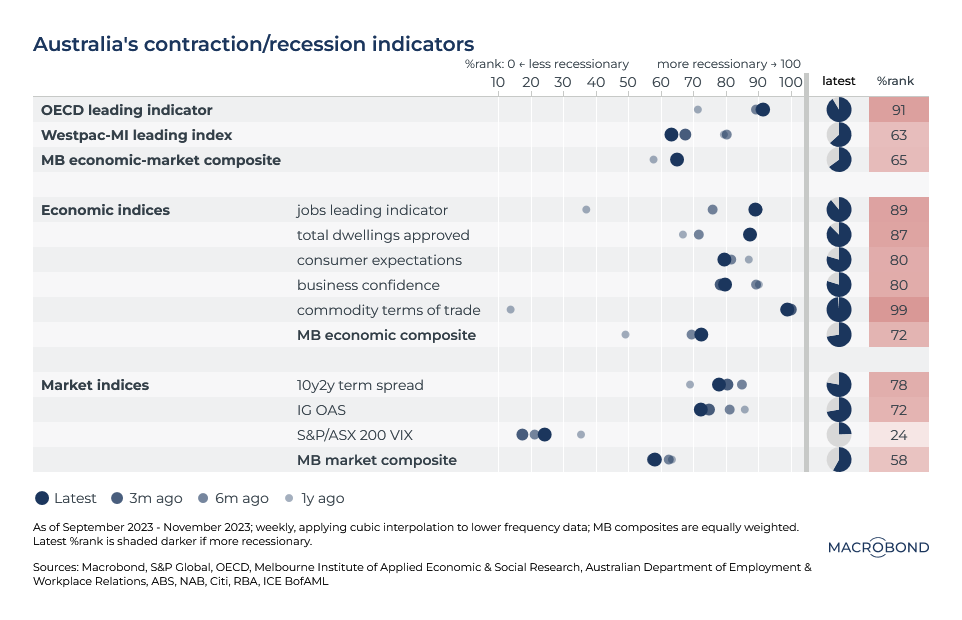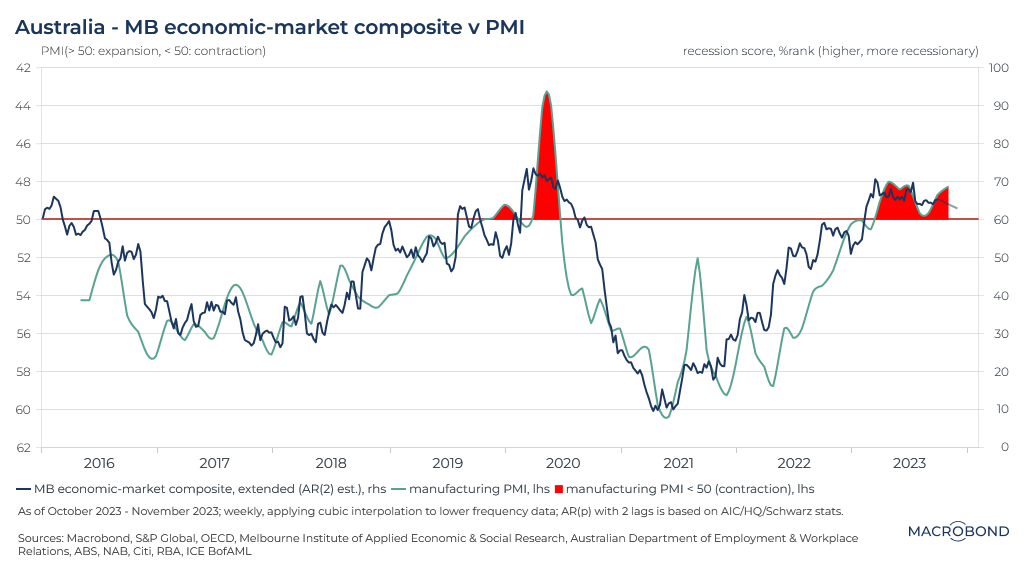Australian recession not to be disregarded
.png)
As central banks—including the RBA—have been tightening the monetary policy globally, it’s worth exploring to what extent economies, especially Australia, are facing a contraction or recession. We examine and track both economic and market indicators, including jobs, dwellings, consumer and business sentiments, terms of trade, a government bond term spread, an IG credit spread, and equity implied volatility. We then compare their standardizations collectively—using a percentile rank—to notable composite measures, and afterwards to the manufacturing PMI in particular.

Figure 1 Australia’s contraction/recession indicators, Macrobond economic-market composite
Economically, the Australian economy looks close to a contraction or recession, considering weakening employment conditions, falling dwelling approvals, relatively low consumer and business expectations, and lower commodity terms of trade (compared to the previous year). Temporally—against three, six, and twelve months ago—the latest economic outlook overall looks worse-off (Figure 1).
Regarding relevant market factors, the 10y2y Australian government term spread steepened somewhat from three-six months ago but remained deeper than twelve months earlier. The IG credit option-adjusted spread (OAS) steadily improved over months from high levels. Meanwhile, Australian stock implied volatility has clearly become subdued. On the whole, the market indicators appear to be less contractionary than the economic leading data, but probably already recovering from recession signals (Figure 1).
In aggregate (by percentile rank means), Macrobond’s Australia contraction/recession composite shows a level close to Westpac’s leading index—composed of hours worked, commodity prices, S&P/ASX 200, etc.—while softer than the OECD composite leading indicator—made up of dwelling permits, manufacturing orders, S&P/ASX 200, etc. (Figure 1).

We compared Macrobond’s Australia contraction/recession composite to the manufacturing PMI, a well-recognized economic leading survey. It can be seen that when our composite measure is no less than around 60, the PMI is below 50, i.e., in contraction territory. Thus, our composite score lying above 60 at present and expectedly into November 2023 (using an AR model) indicates that the economic conditions may still be exposed to the downside (Figure 2).
All in all, since we cannot rule out the possibility of Australia’s economic contraction, we recommend caution in making investment decisions.
3 topics
.png)
Macrobond delivers the world’s most extensive macroeconomic & financial data alongside the tools and technologies to quickly analyse, visualise and share insights – from a single integrated platform. Our application is a single source of truth for...
Expertise
.png)
Macrobond delivers the world’s most extensive macroeconomic & financial data alongside the tools and technologies to quickly analyse, visualise and share insights – from a single integrated platform. Our application is a single source of truth for...
.png)